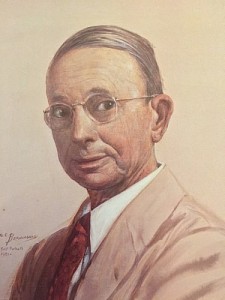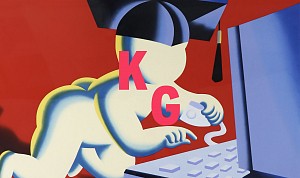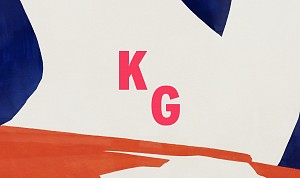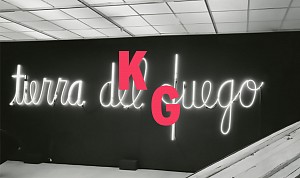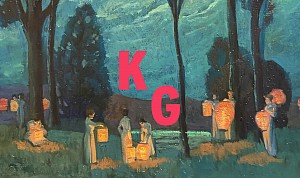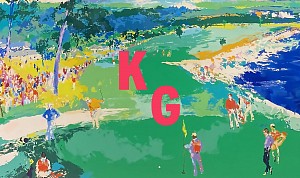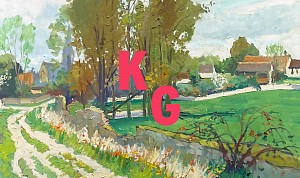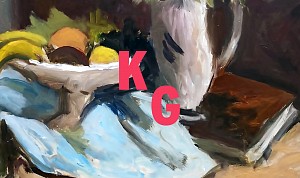Oscar Edmund Berninghaus, 1874-1952: St. Louis-Born Painter of Western Scenes
February 6, 2025 - Martin Kodner
From Martin Kodner's essay in the Gateway Heritage Quarterly Journal of the Missouri Historical Society- St. Louis Missouri Winter 1983-1984 issue.
Oscar Berninghaus never wore floppy caps or jingling spurs. But when he applied brush to canvas or paper, he painted views of an epic American West filled with adventurous episodes, scenery that overwhelmed and inspired by its massive quality and moody colors, and native peoples who maintained their serenity, dignity and traditional life styles amid the paraphernalia of modern times. Over half a century Berninghaus became one of America’s most popular western painters even as he won greater recognition from his artistic peers.
Berninghaus gained a sense of the epic qualities of America and a love of popular art early in his life. Born in St. Louis in 1874, his parents were German immigrants who pulled up their native roots and replanted them in opportunity-rich America. In this new American home, he grew up looking at the nations most democratic art, the hundreds of colorful lithographs which were in his father’s sales case. If the hopes of immigrant parents and the lithographer’s popular views of America were an insufficient influence, young Oscar had only to walk the streets of his home town, a St. Louis that had regarded itself as “the” Gateway to the West for over three-quarters of a century.
Oscar began to develop his talents early in his life, sketching riverfront scenes and transforming the tall tales of the river boatmen into imaginary scenes of the frontier and the Indian heritage of St. Louis. These youthful sketches foreshadowed later epic paintings like “The Landing of Laclede, 1764” and dozens of Veiled Prophet Parade floats with titles such as “Riders of the Purple Sage.”
At age 16 Berninghaus went to work as an errand boy for a St. Louis lithographic firm with the ambition of becoming a lithographer. Three years later the Woodward and Tiernan Printing Company apprenticed him. As he gained experience in rendering exactitude in line and color in lithographies, Berninghaus took three evening terms of study in drawing and composition at the St. Louis School of Fine Arts. That was the extent of his formal training in art.
With a few small commercial commissions behind him, the Denver and Rio Grande Railroad in 1899 hired him to paint a series of watercolor sketches to illustrate the scenery and the economic potential of the Southwest. Berninghaus later recalled that during his first visit he “became infected with the Taos germ.” One part of that infection undoubtedly was his conversation with Western artist Burt Phillips who already had taken up residence in the New Mexico town.
The Taos trip marked the beginning of artistic success. In 1900 St. Louis’ most prestigious photographer, J.C. Strauss, commissioned him to paint a decorative Indian panel in his studio. That same year the Frank D. Healey Galleries organized a one-man exhibition of his sketches, drawings and designs. In the summer of that same year the St. Louis Sunday Star published reproductions of his first Toas paintings.
Other achievements and honors followed during the next decade and a half as Berninghaus divided his time between the art center of St. Louis, with its many potential buyers and commercial commissions, and Taos, where he increasingly found his artistic inspiration. Diligent by nature and with a good business sense, Berninghaus continued to take commercial commissions even as he developed his own artistic sense. Along with designing floats for the Veiled Prophet organization for its annual Parade, he executed a series of western epics for Anheuser Busch, illustrated a book on the manufacture of barite, designed posters, completed five lunettes for the capitol building in Jefferson City, executed several murals, and continued to turn out a steady stream of paintings draw from his yearly visits to Taos.
With a measure of economic security and a ready market for nearly everything he painted, Berninghaus in 1925 moved from St. Louis to become a full-time resident of Taos. The move marked a turning away from historical representations to what he regarded as more important work. “We must have American Art,” he had stated earlier. “I feel that from Taos will come that art.”
For more than four decades after he moved to Taos, Berninghaus did his part in the development of American art. As he shifted from watercolors to oils he moved beyond mere accurate depiction to capture impressionistic moods. Foliage color, for example, became arbitrary rather than naturalistic, and he often rendered the same scene again and again varying the pigment each time. Throughout this period of experimentation, however, he remained ture to what had become a love for exactitude, as can be seen in his renderings of horses with their subtle contours and glossy hues, in otherwise impressionistic paintings.
As Berninghaus experimented with color and the effects of changing light on form, he remained a sensitive visual historian of Taos’ changing Indian culture as the forces of modernization deeply affected the lives of the Pueblo Indians. His later paintings show how Indian rituals became tourist attractions and how the Model T insinuated its way into Southwestern Indian culture.
When Oscar Berninghaus died in 1952 he left an enormous artistic legacy to St. Louis and to America. He helped visualize America’s epic past in watercolor and mural forms, captured historical moments in pen-and-ink drawings like “Shipbuilding, 1902,” and recorded changing Pueblo Indian life in the rich textures of oil. Art historian Patricia Broder captured his breadth when she wrote of him, “He was at once romantic and realist, poet and naturalist.” He was as well an artist who grew and developed through his own career, moving from narrative painting to his own expressive impressionism amplified by the rich detail of a draughtsman. Combining these many qualities, it is no wonder that his art remains so popular, nor, because of his long association with the city, that St. Louis remains the principal urban center where a vast body of his work is held in both museums and private hands.
Read More >>
